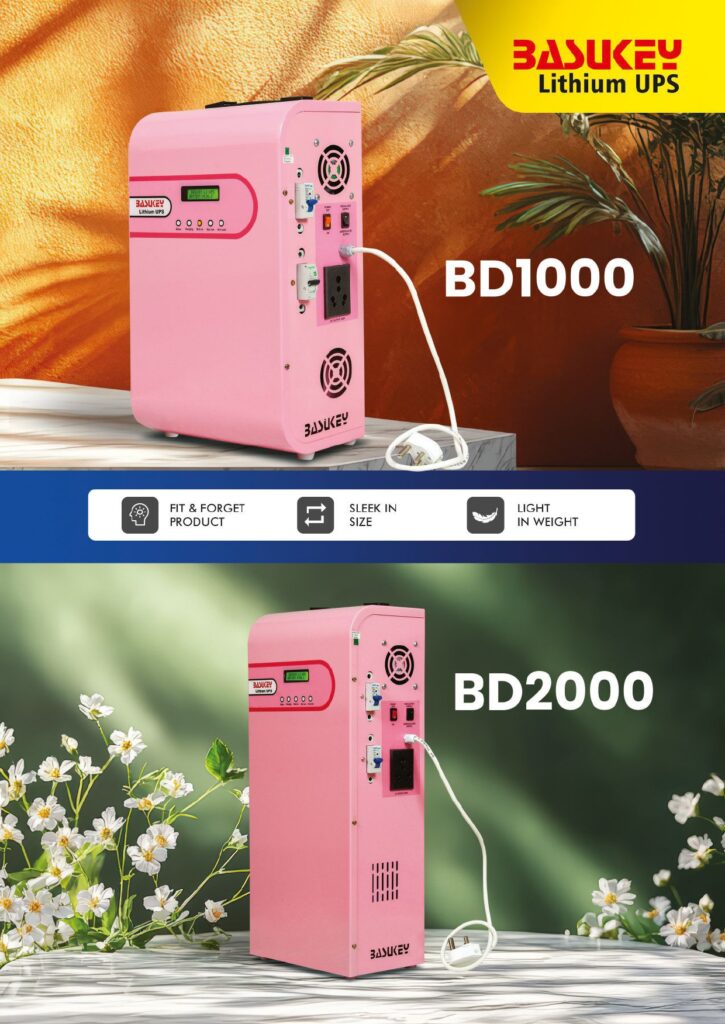Understanding Depth of Discharge (DoD) and Cycle Life in Lithium UPS
Understanding Depth of Discharge (DoD) and Cycle Life in Lithium UPS. When evaluating Uninterruptible Power Supply (UPS) systems, two critical factors influence battery performance and longevity: Depth of Discharge (DoD) and Cycle Life. These parameters determine how efficiently a battery can be used and how long it will last before requiring replacement.
Lithium-ion batteries, now the preferred choice for UPS applications, offer higher DoD and longer cycle life compared to traditional lead-acid batteries. Understanding these concepts is essential for businesses looking to maximize efficiency, reduce costs, and ensure reliable backup power.
What is Depth of Discharge (DoD)?
Depth of Discharge (DoD) refers to the percentage of a battery’s total capacity that has been used before it is recharged.
- A 100% DoD means the battery is completely discharged.
- A 50% DoD means only half of the battery’s capacity has been used before recharging.

How DoD Affects Battery Life?
The deeper a battery is discharged before recharging, the more stress it experiences, which impacts its overall lifespan. However, lithium-ion batteries are designed to handle deeper discharges more efficiently than lead-acid batteries.
| Battery Type | Typical DoD | Effect on Battery Life |
|---|---|---|
| Lead-Acid Battery | 50% | Shorter lifespan if discharged deeper frequently |
| Lithium-Ion Battery | 80-90% | Designed to withstand deeper discharges with minimal degradation |
Lithium vs. Lead-Acid: DoD Comparison
- Lead-Acid Batteries: If discharged beyond 50%, their lifespan decreases significantly due to sulfation and plate degradation.
- Lithium-Ion Batteries: Can regularly handle 80-90% DoD without major capacity loss, making them more efficient for UPS applications.
What is Cycle Life?
Cycle Life refers to the number of complete charge and discharge cycles a battery can undergo before its capacity drops below a usable level (typically 80% of original capacity).
- One cycle = fully discharging a battery and then recharging it.
- A higher cycle life means the battery lasts longer and needs fewer replacements.
Lithium vs. Lead-Acid: Cycle Life Comparison
| Battery Type | Cycle Life (at typical DoD) | Expected Lifespan |
|---|---|---|
| Lead-Acid Battery | 500-1,200 cycles (50% DoD) | 3-5 years |
| Lithium-Ion Battery | 3,000-5,000 cycles (80-90% DoD) | 10-15 years |
How DoD and Cycle Life are Connected
- Shallow Discharges (Lower DoD) Extend Cycle Life: A lithium-ion battery with 3,000 cycles at 80% DoD may last 5,000+ cycles if discharged at 50% DoD.
- Deep Discharges Reduce Cycle Life: Discharging a lithium-ion battery to 100% DoD frequently will slightly shorten its lifespan, though it still outperforms lead-acid batteries significantly.
Why Lithium UPS with High DoD and Long Cycle Life is Better
1. Longer Operational Life
With a higher DoD and more cycles, lithium-ion UPS systems last up to 3 times longer than lead-acid alternatives, reducing the need for frequent battery replacements.
2. More Usable Power Per Charge
Since lithium batteries can safely discharge up to 90% of their capacity, they provide more usable energy compared to lead-acid, which is typically limited to 50% DoD.
3. Cost Savings Over Time
- Fewer battery replacements
- Lower maintenance costs
- Better energy efficiency
These factors contribute to a lower Total Cost of Ownership (TCO), making lithium-ion UPS solutions more cost-effective in the long run.
4. Faster Recharge & Higher Efficiency
- Lithium batteries recharge 4x faster than lead-acid, reducing downtime.
- With a higher round-trip efficiency (~95%), lithium UPS systems deliver more power with less energy waste.
Conclusion
Understanding Depth of Discharge (DoD) and Cycle Life is crucial when selecting a UPS system. Lithium-ion batteries offer higher DoD and significantly longer cycle life than lead-acid, making them the ideal choice for critical power backup solutions.
